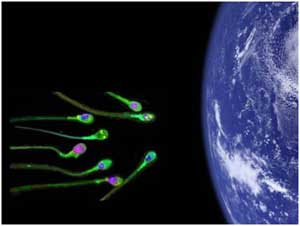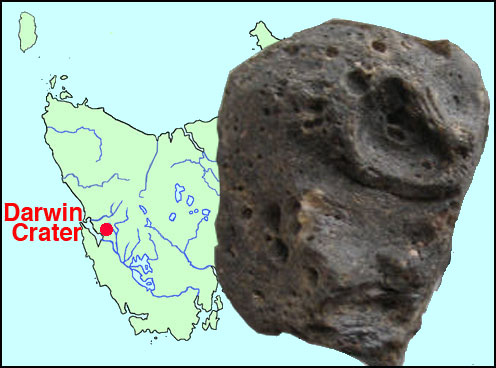November 15, 2013 – As a young man I read a significant amount of science fiction. One of my favourite authors was Sir Fred Hoyle. Other than science fiction Hoyle was known for promoting the theory of panspermia, that life on Earth had a cosmic origin. He wasn’t the first to propagate such a theory. But he and Chandra Wickramasinghe were among the most vocal in proposing that organic matter could be found in interstellar space and that it could hitch a ride on asteroid or comet and end up colliding with our planet.
Of course most scientists back in the 1970s when I was reading about Hoyle and Wickramasinghe’s theory, scoffed at it stating what seemed obvious. Any organic matter hitching a ride on a rock or ice ball in space would be significantly heated by an encounter with our atmosphere that it would be destroyed before impact.
That has now been proven completely wrong by new research that shows organic molecules surviving impact. The research appears in the journal, Nature Geoscience. Scientists studied the debris from the Darwin crater in Tasmania, an impact site from 800,000 years ago. The space body that hit the Earth was traveling at 18 kilometers ( 11.2 miles) per second and temperature on impact exceeded 1,700 Celsius (3,092 Fahrenheit) degrees. These two extreme conditions, high speed impact and high temperatures were thought to be more than enough to destroy any traces of organic molecules. But that was not the case. The smooth glassy spheres formed with impact were thrown as much as 20 kilometers (12 miles) from the site. These impact glasses act as a time capsule capturing the physical material of the impact site. In this case it included perfectly preserved organic material linked to the plants that existed in Tasmania at the time.
So what does this have to do with panspermia? Ejecta from Earth meteorite impacts has been thrown into space and theoretically can end up on another planet. Scientists have discovered Martian ejecta here on Earth and are certain that they will find Earth ejecta on Mars. They estimate it would take as little as 30,000 years for such a migration to take place.
In experiments scientists have shown that some bacteria can survive the speed and associated extreme heat when entering the atmosphere. But now we know that it can also survive the impact. Hence the planets of this and other solar systems are not biologically isolated and this implies that the origin of life on our planet may not have been of our planet.

















